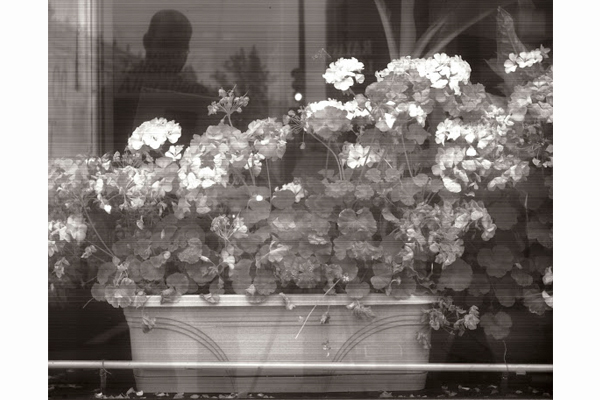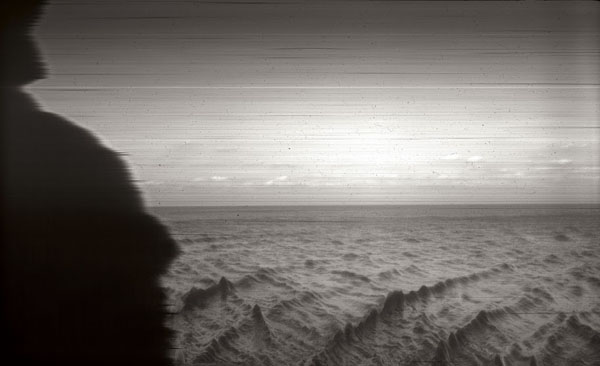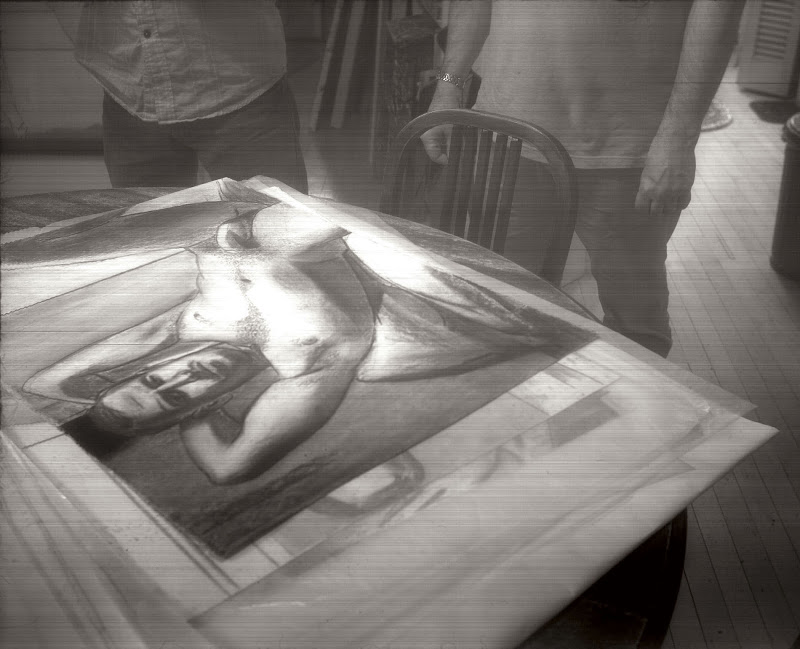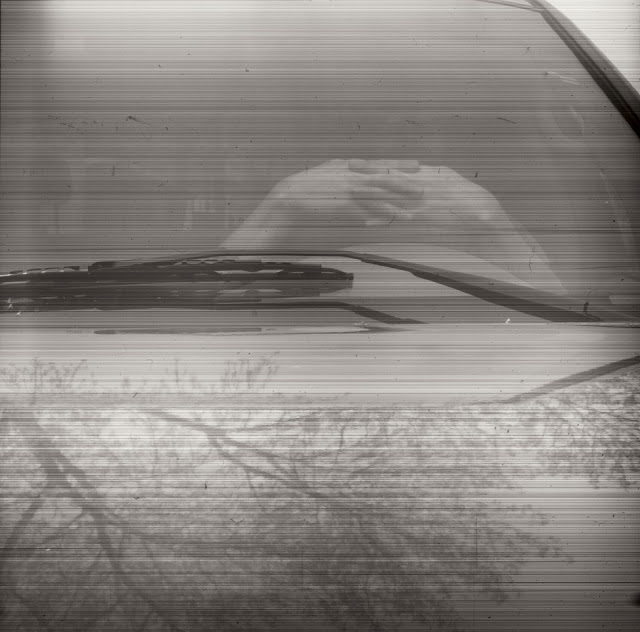
Photography: (all photos) John Neff
John Neff, the self-taught photographer, first hacked a desktop flatbed scanner, then he turned it into a lo-fi camera, and then he produced a large body of new work for his solo exhibition at the Renaissance Society (on view through April 14).
The black-and-white prints are full of glitches and streaks caused by dust, light leaks, and other random irregularities introduced by the broken hardware. Their rough look contrasts wonderfully with Neff’s intimate subject matter: a flower still life, portraits of friends in their homes, a lover in bed. Neff created these nostalgic, emotional images using some pretty basic and accessible materials. He likens the process to making a pinhole camera from an oatmeal box—a common summer camp activity.
Here's how he did it: First, the flatbed scanner is literally broken apart, its LED light arm modified, the cover removed, and the scanner is set upright on a tripod. Then Neff attaches a gutted-out old camera lens to the scanner’s glass bed. Any old junk-shop camera will work, and perhaps older is better—Neff has been using an old folding type and also an old 4×5 field camera. Hooked up to a laptop with scanning software, snapping a digital photograph can take as long as it takes to scan a document.
This technique was not invented by Neff, but he may be the first one to use it in a fine art context. Michael Golembewski brought this technique to greater audiences on this website, which fully details how to make this equipment at home.
Interestingly, this scrappy technique is not unprecedented—before the first professional digital cameras, they were essentially a large digital film plane attached to a lens. The same basic idea produced the unique images below.



John Neff shows at the Renaissance Society, University of Chicago, 5811 S Ellis.


